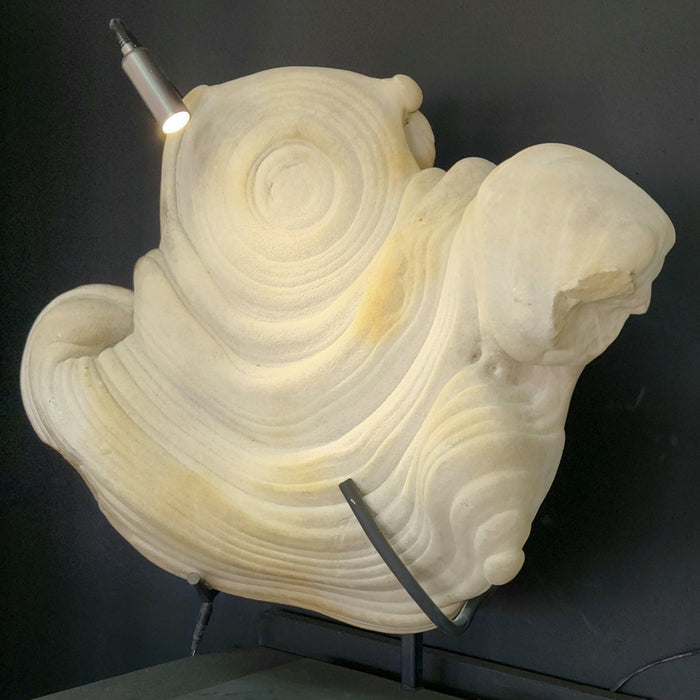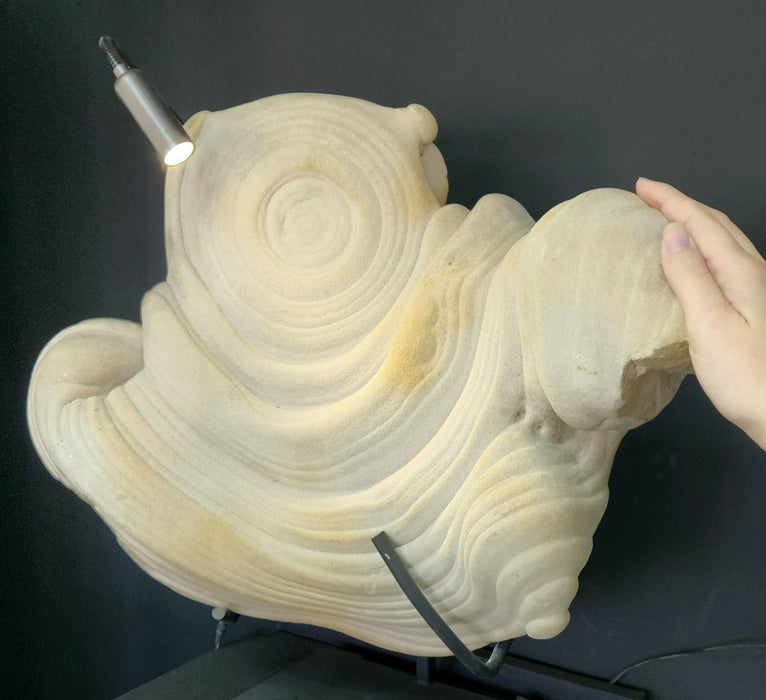
"Astronaut" Gogotte Formation
This Gogotte is from Fontainbleu France, where the most wonderful naturally occurring sculptures are found. It dates from the Oligocene Period, and is approximately 30 million years old.
Specimen approx. size: 22" x 18" x 8"
Specimen on stand approx. size: 22" x 21" x 14"
Stand included.
Gogottes are formed from calcium carbonate combining with very fine quartz crystals. They were produced when superheated water extruded through crevices into a basin of extremely fine white silicate sand. The water became saturated with calcium carbonate (limestone). The swirls and eddies of the water were captured in the gradually concreting stone, forming wonderful and unique natural sculptures. Large intact concretions are uncommon, and specimens unblemished specimens are rarer still.
Louis XIV of France, known as the Sun King, commissioned gogottes to be excavated for his palace gardens. The ornately rounded, scrolling formations—somewhat Baroque in design—still adorn the surroundings of the Grove of the Three Fountains at Versailles, designed by landscape architect André Le Nôtre in 1677. For over 300 years, the gogottes have captivated visitors at Versailles. It is perhaps unsurprising that gogottes have been known to be an inspiration to artists from the Surrealist Art movement, including Henry Moore and Jean Arp. These wonderful forms can be compared to the most beautiful modern sculpture.




